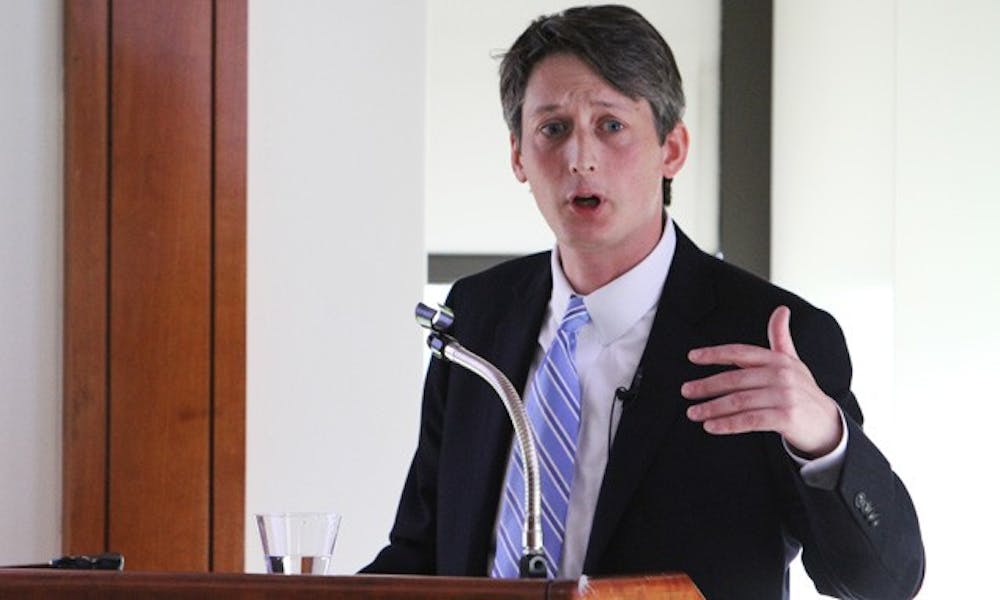America is falling behind in college graduation rates, which may impact its ability to stay competitive globally.
James Kvaal, deputy undersecretary at the U.S. Department of Education, outlined Tuesday the challenges and strategies to increasing the number of students with college degrees in the U.S. The Obama administration plans for the United States to have the highest percentage rate of college graduates in the world by 2020—an honor that Canada held in 2010, hovering right below 60 percent. South Korea and Russia both had approximately 55 percent college graduation rates—compared to the U.S. rate of 38 percent, according to statistics from the College Board.
In a talk titled “Meeting the President’s 2020 College Completion Goal” at the Sanford School of Public Policy, Kvaal drew on his experience at the White House and in education policy.
There are about 13 other countries with more degrees per capita than in the United States, he said.
“Getting there is not going to be easy,” Kvaal said. “Is it feasible to think we’re going to get to 60 percent within a decade? It’s an ambitious goal.”
Nearly two-thirds of those who enroll at a community or for-profit college ultimately do not earn a degree within six years, he said, adding that about one-third of students at public and private four-year universities do not earn a degree. He attributed these graduation rates to a number of factors, emphasizing that finances often determine whether or not somebody graduates.
“When you ask students why they drop out, the response is overwhelmingly about money,” Kvaal said.
He proposed several methods to increase graduation rates. He called for performance-based federal subsidies to replace the current subsidy system, which currently includes subsidies that are granted to community colleges solely on the number of enrolled students 10 days into the semester. Graduation rates, he said, are not considered.
The amount of spending on American Opportunity Tax Credit and Pell Grants has doubled, for a total $20 billion to $25 billion increase in the federal education budget, he said. Kvaal added that the College Board has found that the net price of a college education decreased during the Obama Administration.
Kvaal also mentioned the importance of open online curriculums, which are both cheaper and more accessible to students. He specifically praised the success of the online curriculum at Carnegie Mellon University.
Audience members generally agreed with Kvaal’s points, but some expressed concerns about his lack of attention to K-12 reform in the speech.
“We certainly appreciate any time we get federal money,” said Nancy Cox, a member of the Durham Public Schools’ board of education. “I am pessimistic because my daughter’s [Advanced Placement] biology class had 30 kids…. If we’re not going to fund even high school public education adequately, how are we going to prepare kids to complete college in four to six years? It’s a chicken-and-an-egg scenario.”
Donavan Harbison, a senior at North Carolina Central University studying to be a math teacher, agreed with Cox.
“K-12 is declining right now,” Harbison said. “Until we do something to strengthen that portion of our education system, we’re not going to be able to do anything for [the 2020 goal].”
Still, Kvaal remained optimistic about the department’s future work.
“There’s a great feeling of exploration and potential here,” he said. “It seems there are a lot of low-hanging fruit here and sensible policy decisions we can make.”
Get The Chronicle straight to your inbox
Signup for our weekly newsletter. Cancel at any time.

